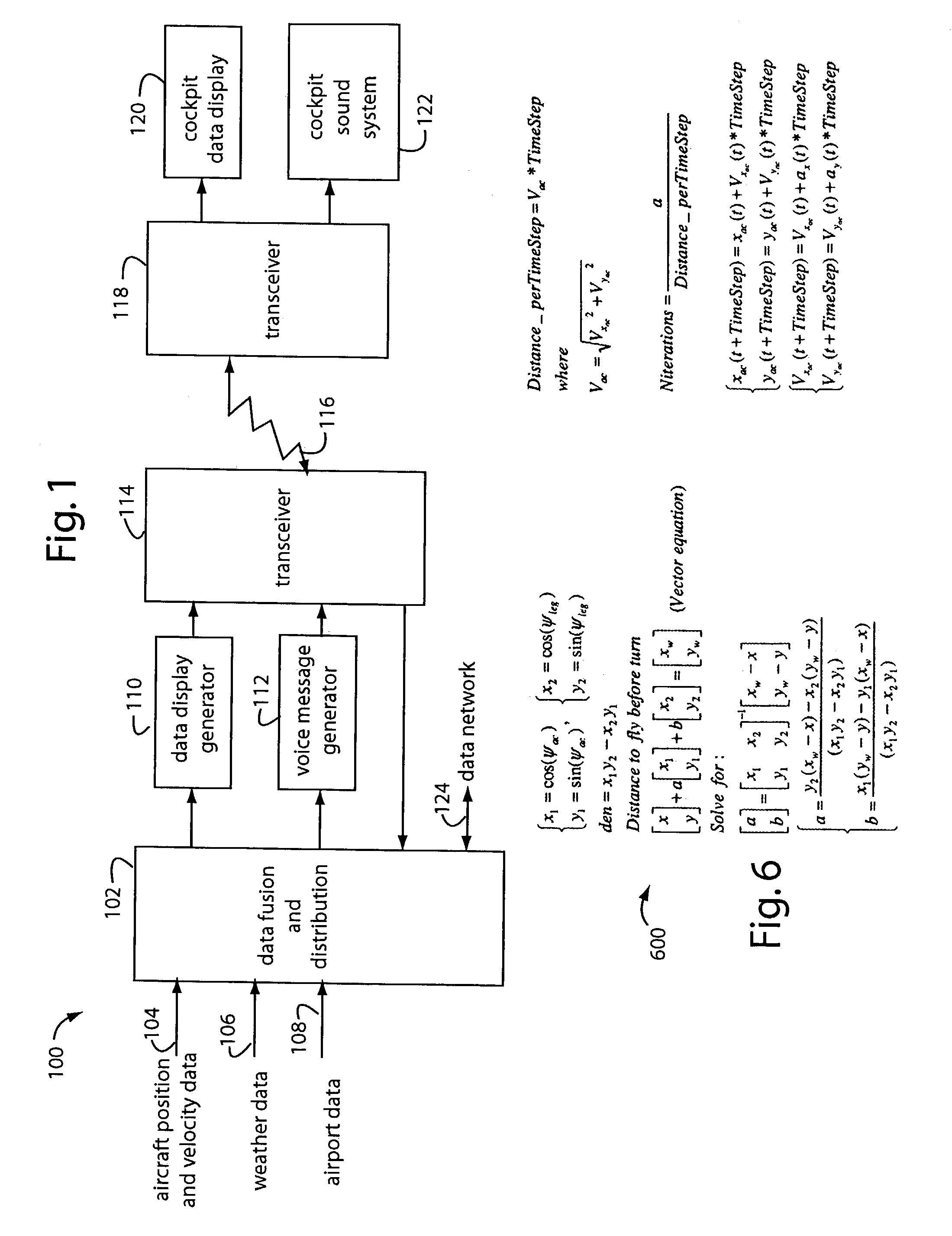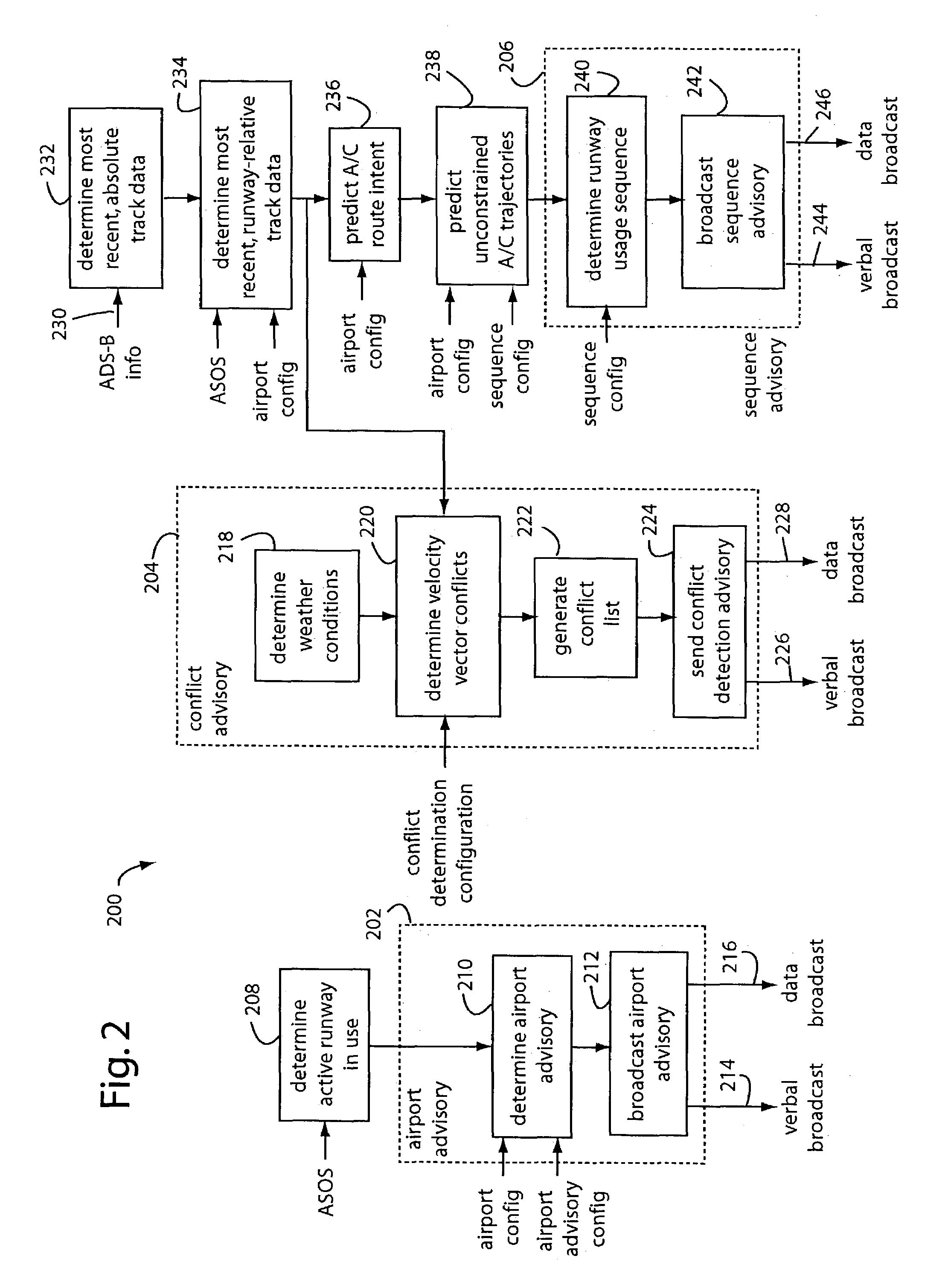Smart airport automation system
a technology of airport automation and automation system, applied in the field of air traffic and flight operations control systems, can solve the problems of ineffectiveness, ineffectiveness, and inability to meet the needs of pilots, and achieve the effects of reducing runway incursions and mid-air conflicts, enhancing pilot situation awareness, and reducing the number of runway incursions
- Summary
- Abstract
- Description
- Claims
- Application Information
AI Technical Summary
Benefits of technology
Problems solved by technology
Method used
Image
Examples
Embodiment Construction
[0021]FIG. 1 illustrates a smart airport automation system embodiment of the present invention, and is referred to herein by the general reference numeral 100. The system 100 gathers a wide variety of data and information from many different types of sources and in many different formats. It then interprets, fuses and structures information for use in real-time by pilots, e.g., especially those approaching or leaving non-towered airports. Such information is also useful to air traffic controllers overseeing non-towered airport operations.
[0022]A data fusion and distribution computer 102 is provided with aircraft-position-and-velocity data inputs 104, weather data inputs 106, and airport data inputs 108. These are processed into structured information, e.g., airport advisories, takeoff and landing sequences for participating aircraft, separation distance thresholds between sequential aircraft, separation monitoring, and conflict detection. Such processing outputs information organize...
PUM
 Login to View More
Login to View More Abstract
Description
Claims
Application Information
 Login to View More
Login to View More - R&D
- Intellectual Property
- Life Sciences
- Materials
- Tech Scout
- Unparalleled Data Quality
- Higher Quality Content
- 60% Fewer Hallucinations
Browse by: Latest US Patents, China's latest patents, Technical Efficacy Thesaurus, Application Domain, Technology Topic, Popular Technical Reports.
© 2025 PatSnap. All rights reserved.Legal|Privacy policy|Modern Slavery Act Transparency Statement|Sitemap|About US| Contact US: help@patsnap.com



